Posts In The “Technical” Category

Living aboard while travelling the world often involves opportunistic shopping. If we see something we want or need, it’s best to just buy it on the spot. We never know if we’ll return to the same store, or if that product will still be available when we do. One way we make this work is…
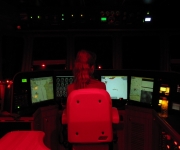
Watchkeeping is one of many important considerations when planning for an ocean crossing or a multi-day passage. Single-handers have little choice but to sleep while underway, with no-one monitoring the helm, while crews of at least two have more options. And the appropriate watch schedule will vary greatly depending on the number of crew, their…
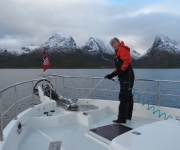
Many boats have an automatic wash-down pump that helps clean the rode before it goes into the anchor locker. For those without, some choose not to clean the rode at all. We’ve not had an automatic wash-down on either of our boats, but we do like the anchor rode stored clean. So raising our anchor…

A couple of years back, we developed a serious rear main oil seal problem with our Northern Lights 12 kW generator. Oil was being sprayed all over the inside of the generator enclosure and running down the block. It was a real mess. Clearly the seal needed replacing, but it’s both a big job (notes…
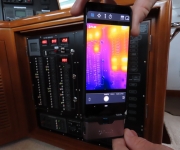
A few year back, we picked up a FLIR ONE Thermal Camera from Amazon. It’s only $200 and operates as an extension to an Android phone (IOS also supported on similar hardware) with an on-phone application. Every 6 months we use the camera to do a full scan of the breaker cabinet, the DC cabinet,…
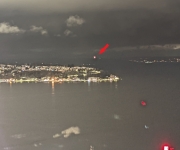
Downtown Seattle is full of apartment buildings overlooking Elliott Bay, with frequent ferry and commercial traffic. If a distress flare were fired in this area, you would expect this to generate a lot of reports. But when one was set off on a recent Tuesday morning, we might have been the only ones to report…

As we prepared Dirona for our trip around the world, we knew that a few of our US-based systems wouldn’t be compatible with those used in other countries. Connecting to shore power was an obvious one. As with household plugs, marine shore power connections around the world differ from those used in North America. Another…

Although we loved the warm weather in the South Pacific, we find ourselves drawn more to higher latitudes. Of the twenty years we’ve cruised in our Nordhavn 52 and our previous boat, most of that time has been spent in places where the summers are warm, but not hot, and the winters can be quite…
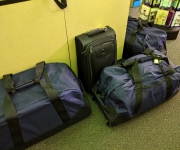
In the decade we spent travelling the world in Dirona, we typically returned to Seattle two-three times a year. And on every one of those trips (when international), we brought back a lot of boat parts and spares in checked luggage. The gear usually weighed at least 200 lbs (90kg) in aggregate, and sometimes as…
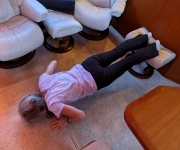
After a decade of living aboard, one of the few aspects of our cruising lifestyle that we weren’t satisfied with, and hadn’t found a good solution for, was exercise. A few years ago, we tried Mark Lauren’s You Are Your Own Gym bodyweight program and it’s worked out very well for us. We enjoy the…
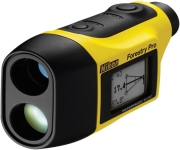
This installation of “Gear We Like” covers the Nikon Forestry Pro Laser Rangefinder. This tool allows us to quickly and accurately measure a bridge clearance and other vertical or horizontal distances. We first discovered a need for this device in East London, South Africa, where we stopped to ride out a storm en route from…

One of the things we really like about our more flexible power system is it allows us to run on shore power connections that deliver less than our peak power requirements. The shore power charges the house bank and 6 kW, 240V 60 Hz inverter supplies the peak capacity needed to run larger appliances such as the…
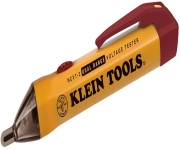
This installment of the “Gear We Like” series features the Klien NCVT-2 non-contact voltage detector. This inexpensive tool makes it super-easy to ensure that power actually is available at the shore power pedestal before plugging in. There are many ways to check for power at a pedestal, but none faster than using a non-contact sensor….
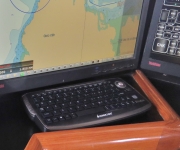
In the past twenty years, we’ve run a combined 16,400 engine hours and traveled over 120,000 miles on the two boats we’ve owned. On our first boat we spent a decade extensively exploring the Pacific Northwest and researching the material for our guide, Cruising the Secret Coast: Anchorages on British Columbia’s Inside Passage. In our…
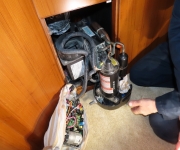
Last summer, our pilot house and master stateroom HVAC units stopped working. Since we’d just got out of the yard in Stornoway Scotland, it was just about 100% certain that the two failures were correlated, and caused by air in the system. We bled the pump and there was air. But when we tested the…
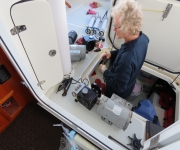
We have a Village Marine STW-600 watermaker that nominally produces 25 gallons per hour. We use it heavily and, over the last 11 years, we have wound up just over 2,000 hours on it. Since the watermaker is such a mission critical component for us, we wanted to have lots of spares on board so…
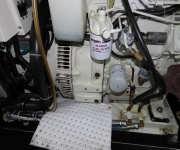
An engine seldom “just gets better”—close to never—but our generator was leaking vast amounts of oil from the rear main oil seal prior to the cylinder head replacement. If the generator sound attenuation shield front cover was removed during operation, it would spray the engine room floor and the neighboring wing engine, creating a real…
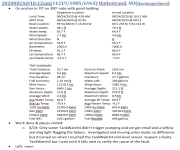
We keep a detailed ship’s log that records where we have been, what we have done, system state, and things we fix. Unlike commercial ship’s logs, that normally are hand-maintained and can’t be modified, ours is a bit primitive in that it’s just a Word document. We focus on it being easy to maintain rather…